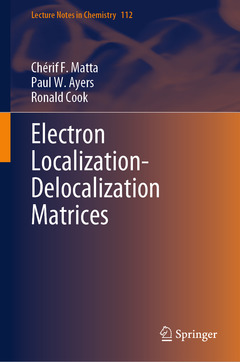Description
Electron Localization-Delocalization Matrices , 1st ed. 2024
Lecture Notes in Chemistry Series, Vol. 112
Authors: Matta Chérif F., Ayers Paul W., Cook Ronald
Language: English
Subjects for Electron Localization-Delocalization Matrices :
Keywords
Atoms in molecules; Chemical graph theory; Electronic structure theory; Matrix representation of molecules; Neural networks; Principal component analysis; Quantitative structure–activity relationship (QSAR); Quantitative structure–property relationship (QSPR); Simulation molecular properties
158.24 €
In Print (Delivery period: 15 days).
Add to cart220 p. · 15.5x23.5 cm · Hardback
Description
/li>Contents
/li>Biography
/li>Comment
/li>
An Introduction to Electron Localization-Delocalization Matrices.- The Physics of Electron Localization and Delocalization.- The Quantum Theory of Atoms in Molecules and Electron Localization and Delocalization.- Localization-Delocalization Matrix Representation of Molecules.- Molecular Fingerprinting using Localization-Delocalization Matrices: Computational Aspects.- Principal Component Analysis of Localization-Delocalization Matrices.- Localization-Delocalization Matrices Analysis for Corrosion Inhibition.- Localization-Delocalization Matrices Analysis in Predicting Mosquito Repellency.- Modeling Enzyme-Substrate Interaction with Localization-Delocalization Matrices.- Localization-Delocalization Matrices of Large Systems.- Closing remarks.
Ronald L. Cook is currently the CTO of Molecular Design Innovations, LLC., 754 S Brau




